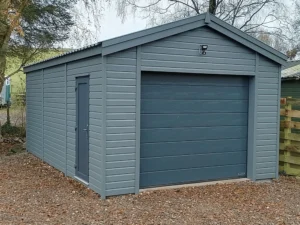Telling mice and rats apart is super important if you want to get rid of them properly. They act differently, come in different sizes, and mess things up in their own ways, which affects how we deal with them.
Mice are smaller, like 2.5 to 4 inches, and they’re pretty curious, sneaking into houses and messing with stuff like insulation and wiring. Rats are bigger, around 7 to 9 inches, and can really mess things up, chewing through wood and plastic.
Knowing which one you’re dealing with helps you use the right stuff to keep them from causing more trouble.
Physical Characteristics: Identifying Mice and Rats for Pest Control
If you want to keep these little critters under control, it’s good to know whether you’re dealing with mice or rats.
Mice are tiny, about 2.5 to 4 inches long. Their tails are super long, sometimes even longer than their bodies, which helps them zip around. They’ve got big ears and sharp little faces that make them easy to spot.
Rats, on the other hand, are much bigger, around 7 to 9 inches long. Their tails are shorter, giving them a chunkier look.
They also have smaller ears, making their heads seem solid and round. Being able to tell them apart is key if you’re trying to figure out what’s sneaking around your house or garden and pick the right way to deal with them.
Types of Droppings
Droppings can really help you figure out if mice or rats are hanging out in your house. These tiny signs tell you exactly which pesky rodent you’re dealing with.
Sounds that Give Them Away
When mice are around, you’ll often hear their tiny, high-pitched squeaks at night. You might also notice the quick, light steps of their little feet as they dart around looking for food or a place to hide. If you hear scratching in the walls or ceiling, it’s a good hint that mice are nearby.
Distinctive Rat Noises
Rats, being bigger than mice, make louder noises. You might hear thumping or rustling as they move through cluttered spaces or crawlspaces. Their squeaks are also louder. They love hanging out in attics or basements, especially at night when they’re busy looking for food.
Practical Application
Listening to these sounds can help you figure out which rodent you’re dealing with. High squeaks and light scurrying mean mice, while heavier, louder sounds point to rats. By using these sound clues, you can tackle pest control quickly and easily.
Behavioural Differences: Feeding Habits, Nesting Preferences, and Activity Times
Getting to know how mice and rats behave is super important if you want to keep them out of your home. They’ve got different ways of eating, nesting, and moving around, which helps you figure out who’s causing the chaos.
Mice are like little snackers, munching on grains and seeds, and they love leaving crumbs everywhere. They’re not about big meals, just small bites and off they go.
Rats, on the other hand, are like food planners. They go for meat and grains, and they like to gather their stuff, leaving behind chewed packages.
When it comes to nests, mice choose cosy, hidden spots using soft stuff like paper and fabrics, usually near their food stash. Rats prefer bigger, quieter places, using tougher materials like twigs and leaves.
You might find them in places like basements, attics, or even outdoor burrows. Spots that often end up being checked by a professional pest control firm if the problem gets out of hand.
Time of day is another hint. Mice are mainly night owls but might pop up in the day. Rats are night pros and hardly ever come out in daylight. Watching these habits can really help you figure out which pesky pest you’ve got and how to deal with them best.
Tips on Effective Traps and Baits for Each Type of Rodent
Managing a rodent problem doesn’t have to be a nightmare if you choose the right traps and bait. It’s all about keeping people and the environment safe. Whether you’re tackling mice or rats, a solid plan can help you get rid of them pretty swiftly.
Mouse Control Tactics
Getting rid of mice is a breeze with the right tools. Snap traps are effective and easy to use. Just pop them along skirting boards or wherever you spot mice scurrying about. Chocolate or peanut butter makes fantastic bait.
If you’ve got pets or little ones around, bait stations are a safer choice. Once, I spotted a mouse darting along my kitchen wall, and placing a trap there did the trick!
Rat Management Strategies
Rats are a bit more challenging since they’re larger and sneakier. You’ll need bigger traps, like live-catch ones. Tempt them with meat or cheese. Basements and attics are their favourite hideouts, so place traps there.
Remember to wear gloves when setting traps, so your scent doesn’t tip them off. Sealing up any entry points can also prevent them from making a comeback.
Avoiding Harmful Methods
It’s wise to steer clear of poisons, as they can harm other animals and upset the environment. Instead, consider natural deterrents like peppermint oil to keep rodents at bay.
By following these simple tips, you can manage a rodent issue and keep your home safe and free from these pesky intruders.
Why not give these methods a go and see how they work for you? And if you’ve got any tips of your own, share them with friends to help keep everyone’s home rodent-free!
Prevention Methods
Proper prevention is key to keeping mice and rats at bay. By focusing on sealing entry points, storing food properly, and maintaining cleanliness, you can greatly reduce the chances of these unwelcome guests settling in.
Sealing Entry Points
Mice and rats can wriggle through tiny gaps, so it’s a good idea to check your home for any holes. Use stuff like steel wool or wire mesh to block them around walls, doors, and pipes. Make sure windows shut tight and door sweeps aren’t worn out.
Storing Food
How you keep your food matters a lot in keeping rodents away. Use airtight containers and don’t leave pet food out overnight. Make sure bins are tightly sealed because food smells can draw pests in.
Keep an eye on your pantry for any signs of munching or spills and secure anything that might tempt them.
Maintaining Cleanliness
A clean home doesn’t attract rodents as much. Regularly sweep and vacuum to get rid of crumbs, keep counters free of food bits, and wash dishes right away. Outside, keep rubbish bins away from the house so you don’t invite rodents over.
By trying out these tips, you’re not just keeping rodents out, but also making your home healthier.
Conclusion
Knowing the difference between mice and rats can really help when trying to deal with pests. Mice are pretty small, around 2.5 to 4 inches, with long tails and big ears. Rats, on the other hand, are bigger, about 7 to 9 inches, with shorter tails and smaller ears.
They act differently, too, which affects how they eat and where they nest. If you can tell them apart, you can pick the right traps and baits, making it easier and quicker to get rid of them. Understanding all this can save you time and money while keeping your home safe.
Also Read-Home Nursing Services: Personalized Care in the Comfort of Your Home










